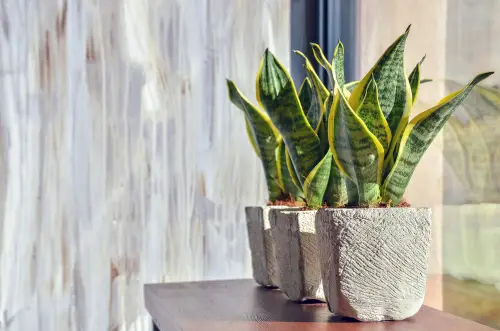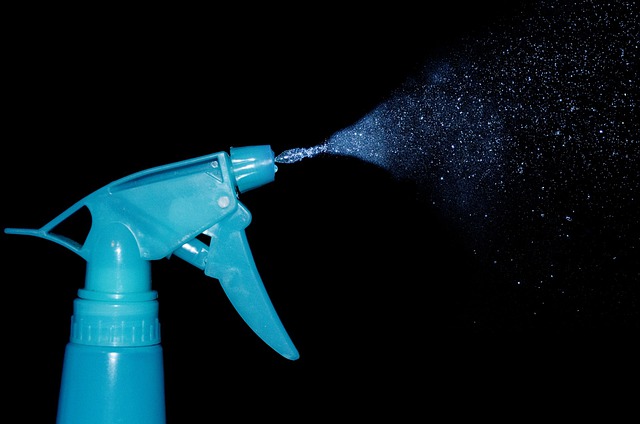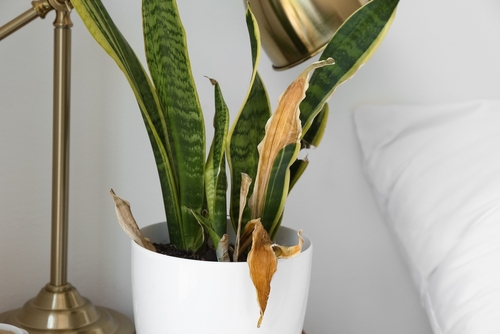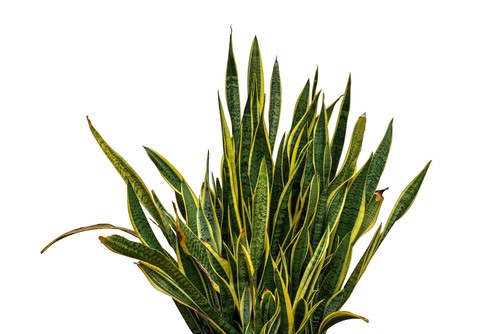Snake plants are a popular choice for indoor plants due to their low maintenance and air-purifying qualities. However, if you notice your snake plant getting mushy, it could be a sign of an underlying issue. This article will explore the reasons why snake plants get mushy and what you can do to prevent and treat it.
Recognizing the symptoms of a mushy snake plant is the first step in identifying the problem. Some common signs include soft, mushy leaves, yellowing leaves, and a foul odor emanating from the soil. Understanding the causes of these symptoms is crucial in determining the root cause of the issue.
Overwatering is often the main culprit behind mushy snake plants. Snake plants are succulents and can tolerate long periods of drought. When they are overwatered, the roots become waterlogged, leading to root rot, which can spread to the leaves.
Identifying the root cause of the problem and taking necessary steps to prevent further damage can help ensure healthy growth for your snake plant.
Key Takeaways
- Recognizing the symptoms of a mushy snake plant is crucial in identifying the problem.
- Overwatering is often the main cause of mushy snake plants.
- Identifying the root cause of the problem and taking necessary steps to prevent further damage can help ensure healthy growth for your snake plant.
More on this category:
- Why Is My Purple Passion Plant Wilting?
- Why Is My Polka Dot Plant Wilting?
- Why Is My Polka Dot Plant Leggy?
Recognizing the Symptoms of a Mushy Snake Plant

Mushy snake plant leaves are a common problem that can occur due to several reasons. It is essential to recognize the symptoms of a mushy snake plant to address the issue promptly. Here are some of the symptoms that you should look out for:
1. Mushy Leaves
One of the most common symptoms of a mushy snake plant is soft and mushy leaves. Overwatering is the most common reason behind mushy leaves in a snake plant. When the roots of the snake plant sit in water for an extended period, they start to rot, leading to mushy leaves.
2. Brown Spots
If you notice brown spots on your snake plant leaves, it could be a sign of fungal or bacterial infection. When the snake plant leaves are wet for an extended period, they become susceptible to fungal and bacterial infections, leading to brown spots.
3. Yellow Leaves
Yellow leaves on a snake plant are a sign of overwatering or underwatering. When the roots of the snake plant sit in water for an extended period, they start to rot, leading to yellow leaves. On the other hand, underwatering can cause the leaves to turn yellow and dry.
4. Wilting Leaves
Wilting leaves are a sign of underwatering or overwatering. When the snake plant is underwatered, the leaves start to wilt and dry. On the other hand, overwatering can cause the roots to rot, leading to wilting leaves.
5. Drooping Leaves
Drooping leaves are a sign of overwatering or underwatering. When the snake plant is overwatered, the leaves become heavy, leading to drooping leaves. On the other hand, underwatering can cause the leaves to droop and dry.
6. Leaves Turning Yellow
Leaves turning yellow is a sign of overwatering or underwatering. When the snake plant is overwatered, the leaves start to turn yellow and mushy. On the other hand, underwatering can cause the leaves to turn yellow and dry.
7. Damaged Leaves
Damaged leaves on a snake plant are a sign of several problems, including fungal or bacterial infections, pests, and diseases. It is essential to identify the cause of the damage to address the issue promptly.
Why is Your Snake Plant Getting Mushy – 6 Common Problems

Snake plants are known for their hardiness and resilience, but sometimes they can develop mushy leaves. There are several causes for this problem, and it is important to understand them in order to prevent it from happening again.
1. Overwatering
Overwatering is the most common cause of mushy snake plant leaves. Snake plants prefer dry soil, and too much water can lead to root rot, which can cause the leaves to become mushy and eventually die. It is important to allow the soil to dry out completely before watering again.
2. Poor Drainage
Poor drainage is another common cause of mushy snake plant leaves. If the soil does not drain properly, it can become waterlogged, which can lead to root rot and mushy leaves. It is important to use a well-draining soil mix and a pot with drainage holes to prevent this problem.
3. High Humidity
Snake plants prefer low humidity, and high humidity can lead to fungal infections and mushy leaves. It is important to keep the plant in a well-ventilated area and avoid misting the leaves.
4. Temperature Shock
Temperature shock can also cause mushy snake plant leaves. If the plant is exposed to sudden changes in temperature, it can cause the leaves to become soft and mushy. It is important to keep the plant in a stable environment and avoid exposing it to extreme temperatures.
5. Pest Infestation
Pest infestations can also cause mushy snake plant leaves. If the plant is infested with pests like spider mites or mealybugs, it can weaken the plant and cause the leaves to become mushy. It is important to inspect the plant regularly and treat any pest infestations promptly.
6. Disease
Disease can also cause mushy snake plant leaves. Fungal infections like root rot can cause the leaves to become mushy and eventually die. It is important to inspect the plant regularly and treat any signs of disease promptly.
Identifying the Root Cause

When a snake plant becomes mushy, it is an indication that something is not right. Identifying the root cause is the first step in fixing the problem. Here are some common causes of mushy snake plants:
1. Overwatering
Overwatering is the most common cause of mushy snake plants. Snake plants are succulents and do not require frequent watering. When the soil is watered too often, it becomes waterlogged, and the roots cannot absorb oxygen. This leads to root rot, which causes the leaves to become mushy and soft.
2. Soil
The type of soil used can also contribute to mushy snake plants. Snake plants require well-draining soil that allows excess water to drain away from the roots. If the soil is too heavy and does not drain well, it can lead to root rot and mushy leaves.
3. Drainage
Proper drainage is critical for snake plants. If the plant is in a container without drainage holes, excess water cannot escape, and the soil becomes waterlogged. This can lead to root rot and mushy leaves.
4. Disease
Disease can also cause a snake plant to become mushy. Fungal and bacterial infections can spread quickly in waterlogged soil and cause the roots and leaves to rot.
5. Damage
Physical damage to the roots or leaves can also cause a snake plant to become mushy. If the roots are damaged, they cannot absorb water and nutrients, and the leaves may become soft and mushy.
Preventing Further Damage
If you notice mushy leaves on your snake plant, it’s crucial to act quickly to prevent further damage. Here are some steps you can take to prevent further damage to your plant:
1. Proper Watering

Overwatering is a common cause of mushy snake plant leaves. It’s important to water your plant only when the topsoil is dry to the touch. You can check this by sticking your finger into the soil. If it feels dry, it’s time to water your plant. Avoid watering your plant too frequently, as this can lead to wet soil and root rot.
2. Improved Drainage
Poor drainage is another common cause of mushy snake plant leaves. If your plant is in a pot without drainage holes, consider repotting it into a container with proper drainage. You can also add perlite or vermiculite to your soil mix to improve drainage.
3. Temperature Control
Snake plants prefer temperatures between 60-85°F (15-29°C). If your plant is exposed to extreme temperatures outside of this range, it can lead to stress and damage to the leaves. Keep your plant in a comfortable temperature range to prevent further damage.
4. Pest Control
Pests such as spider mites can also cause damage to your snake plant leaves. Regularly inspect your plant for signs of pest infestation and take appropriate measures to control them if necessary. This can include using a mild soap and water solution or an insecticidal soap.
5. Disease Prevention
Fungal diseases such as root rot can also cause mushy snake plant leaves. To prevent this, ensure your plant is in well-draining soil and avoid overwatering. You can also use a copper fungicide to prevent and treat fungal diseases.
By following these steps, you can prevent further damage to your snake plant and ensure it stays healthy and thriving.
Treating a Mushy Snake Plant
If you have a mushy snake plant, there are some steps you can take to help it recover. The following sub-sections will cover the different methods you can use to treat your snake plant.
1. Repotting
If your snake plant is mushy due to overwatering, it may be time to repot it. Repotting will give your plant a fresh start in new, well-draining soil. When repotting, use a potting mix that includes coconut coir or perlite to improve drainage. A terracotta pot is also a good option as it allows for better airflow.
2. Pruning Damaged Leaves
Mushy leaves on your snake plant can be a sign of damage or disease. Pruning damaged leaves can help prevent the spread of disease and encourage new growth. Use sharp, clean scissors to trim off any mushy or discolored leaves. Be sure to cut the leaves at the base where they meet the soil.
3. Using Fungicides

If your snake plant has a fungal disease, using a fungicide can help treat the problem. Cinnamon, potassium permanganate, and copper fungicides are all effective options. Be sure to follow the instructions on the label carefully to avoid damaging your plant.
4. Recovery and Care
After repotting, pruning, or using fungicides, your snake plant will need time to recover. Be sure to give it the proper care it needs during this time. Water your snake plant sparingly and only when the soil is completely dry. Avoid overwatering and make sure to use well-draining soil.
In addition to the above treatments, it’s important to take steps to prevent your snake plant from getting mushy in the future. Make sure your plant has proper drainage and use a well-draining soil mix. Water your snake plant sparingly and only when the soil is completely dry. With proper care, your snake plant should recover and thrive.
Ensuring Healthy Growth
To ensure that your snake plant remains healthy and does not become mushy, proper care is necessary. This section will cover the essential factors that contribute to a healthy snake plant, including proper soil mix, ideal lighting, optimal humidity and temperature, and regular inspection.
1. Proper Soil Mix
The soil mix plays a crucial role in the healthy growth of a snake plant. It is essential to use well-draining soil that allows excess water to drain out quickly. Regular potting soil may not be the best option for snake plants as it retains moisture for more extended periods, leading to root rot.
A succulent mix or a mixture of potting soil, perlite, and sand in a 2:1:1 ratio is an excellent option for snake plants. This mix ensures that the soil is well-draining and allows the roots to breathe.
2. Ideal Lighting
Snake plants are adaptable houseplants that can tolerate low to bright indirect light. However, they prefer bright, indirect light and do not do well in direct sunlight. Direct sunlight can scorch the leaves and cause them to droop. If the snake plant is not getting enough light, the leaves may become thin and stretched.
3. Optimal Humidity and Temperature
Snake plants can withstand a wide range of temperatures, but they thrive in a temperature range between 60°F to 85°F. It is essential to keep the plant in a comfortable temperature zone, away from drafts and extreme temperatures.
Snake plants prefer moderate humidity levels and can tolerate dry air. However, if the air is too dry, the leaves may become crispy and brown.
4. Regular Inspection

Regular inspection is necessary to ensure that the snake plant remains healthy. Inspect the plant regularly for any signs of mushy leaves, root rot, or pests. If the soil is moist for an extended period, it may lead to root rot, which can cause the leaves to become mushy.
Remove any mushy leaves and inspect the roots for any signs of rot. If the roots are mushy, it is necessary to repot the plant in fresh soil.
By following these essential care tips, you can ensure that your snake plant remains healthy and does not become mushy. Remember to provide the plant with well-draining soil, bright indirect light, moderate humidity, and regular inspection.
Frequently Asked Questions
How can I save my snake plant if it has become mushy?
If your snake plant has become mushy, the first thing you need to do is to remove it from the soil and inspect the roots.
If the roots are brown, slimy, and have a foul odor, it is likely that your snake plant has root rot. In this case, you need to cut off the affected roots, repot the plant in fresh soil, and avoid overwatering it in the future.
Why are the leaves of my snake plant soft and wrinkled?
The leaves of a snake plant can become soft and wrinkled if the plant is not getting enough water. However, overwatering can also cause the leaves to become soft and mushy. Therefore, it is essential to find the right balance of watering for your snake plant.
What should I do if my snake plant has soggy roots?
If your snake plant has soggy roots, it is likely that it is suffering from root rot. To save your plant, you need to cut off the affected roots and repot it in fresh soil. It is also essential to ensure that the plant is not overwatered in the future.
Why are the tips of my snake plant soft?
The tips of a snake plant can become soft if the plant is not getting enough water. However, overwatering can also cause the tips to become soft and mushy. It is essential to find the right balance of watering for your snake plant.
How do I treat leaf rot on my snake plant?
If your snake plant has leaf rot, you need to remove the affected leaves and ensure that the plant is not overwatered. You can also treat the plant with a fungicide to prevent the spread of the disease.
How often should I water my snake plant to prevent it from becoming mushy?
Snake plants are drought-tolerant and do not require frequent watering. To prevent your snake plant from becoming mushy, you should water it only when the soil is completely dry. Overwatering can cause the roots to rot and the leaves to become mushy.

Hey, I’m Lisa and I’ve been an avid gardener for over 30 years. I love writing, talking and living in the garden! Feel free to connect with me on my socials below


